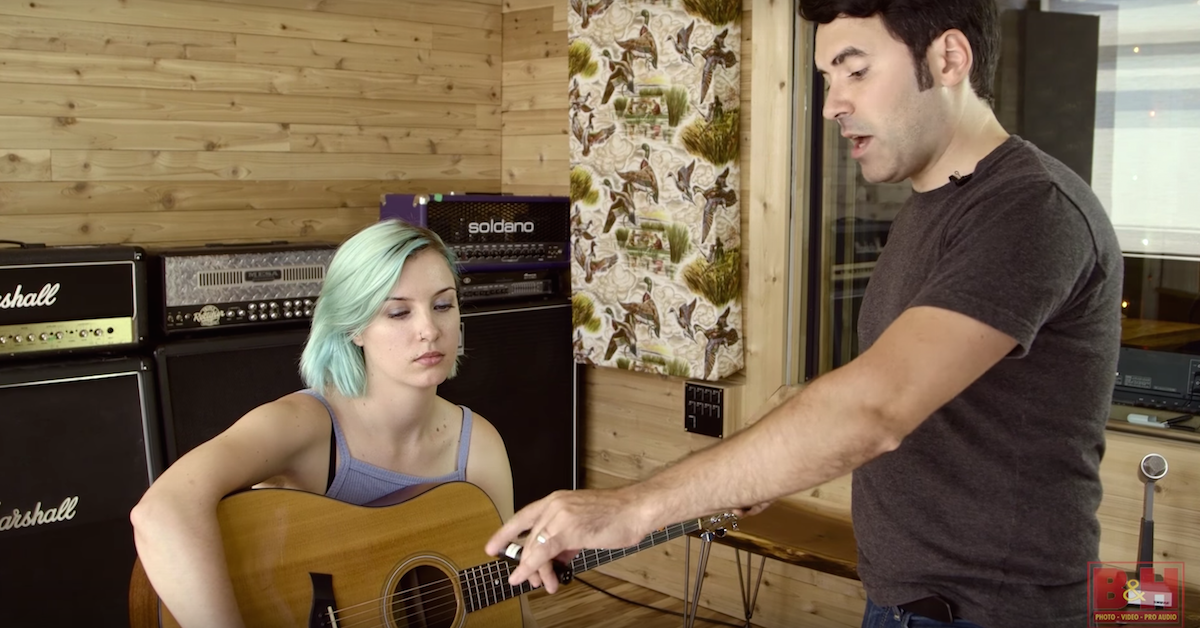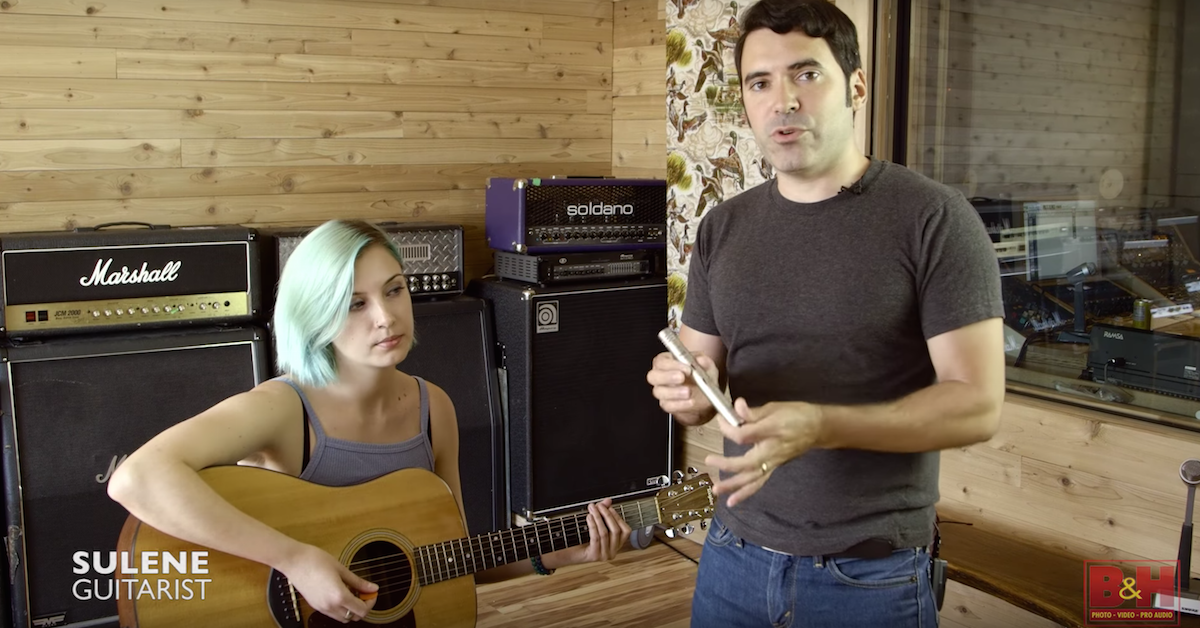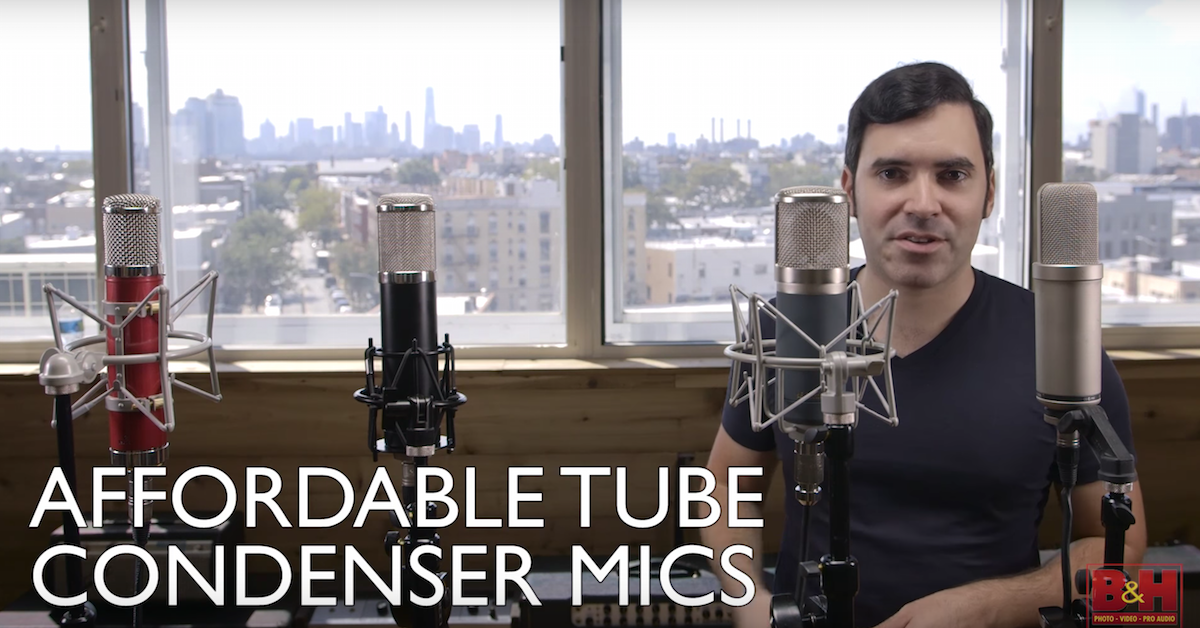How to Record Electric Guitar: Microphone Techniques
We’re going to start off with some single mic techniques, close micing, and then we’re going to look at ways to blend multi-mics. Both multiple close mics, as well as close and distant mics. We’re going to go through a whole array of approaches today. I hope you enjoy it. We’ve got a great guitarist with us, Sulene Van der Walt. Let’s dive right in and get started.
So let’s look at a few ways to mic an electric guitar amp. You really have two main strategies. You’ve got your close mics and your distant mics, and for either of those approaches, you can use a dynamic mic, like this Shure SM57, probably one of the most popular mics in the history of the universe for micing guitars. You can also look at ribbons and condenser mics.
Ribbons are going to give you a bit more of a full bodied and smoother sound. We’ve got some Royer 121s today, and those are going to have a lot more bottom end than the Shure SM57, and a lot — kind of a throatier, more full bodied mid-range.
We’re also going to try out some condenser mics on this amp, and you can get a bit more of a hi-fi tone that way, a bit more of a comprehensive picture of the amp. You can also blend these approaches together. One of my favorite things to do is on a two speaker amp, put a dynamic mic on one speaker, and a condenser mic on the other speaker, and kind of blend them together to taste.
So the two approaches you can take when you’re doing a close mic on an amp are either A, kind of go on axis, meaning pointing directly at the cone of the amp. It can be a little tricky to find the cone on these speakers sometimes, so it’d be really handy to take a flashlight, and if you shine a flashlight right into the front of this grille, you’ll usually be able to see the outline of a speaker.
Now, going right on the cone will give you a lot of clarity, a lot of articulation, you almost get a kind of papery top end out of it, but if you’re looking for a kind of maximum crunch and top end edge, that can really be the way to go. What’s more popular for people looking for a fatter sound is to go more toward the side of the speaker, so we’re a little more off-axis. You can even go straight ahead, or some folks like to go more at like, a 45 degree angle, so you’re pretty much parallel with the speaker cone, and that curves around.
Sticking it right up against the grille is fine. You can experiment with the sound going further back as well, but on a dynamic mic like this one with a cardioid pattern, you might get a little bit more of kind of a bass lift when you’re right on it as opposed to further back.
Like I said, one of my favorite things to do is to put a dynamic on one side and the condenser on the other, but some folks will blend together different types of dynamics. Say, a Shure SM57 along with a Sennheiser MD421 that has kind of an even, brighter tone. You can also blend this with something like a Royer 121. If you put a Royer 121 ribbon right against this speaker cone, you get a lot more bottom end, a lot more of a full bodied tone, and if you want the guitar to take up a lot of space in the mix, a Royer 121 might do you some good.
But if you want something that’s really classic and a little bit lean, an SM57 is hard to beat. A lot of other mics like this — an Audix i5 can do you well, a Beyerdynamic M201, kind of great mics, but always good to have one of these in your studio.
What we’re also going to be playing around with here are some slightly more distant mics, and when you’re doing more distant mics, you have two approaches. You can go real distant and use it almost like a room mic that’s going to act as an accent mic filling in the tone for the close mics, or you can place them kind of like we have now, where you’re maybe a foot to two feet away, and there, you’re just getting a natural sound of an amp in a room. This kind of thing can work very well for either a Blues guitar tone, or a somewhat atmospheric guitar tone. Something you want to set further back in the mix, so the guitar doesn’t feel like it’s sitting right at the edge of the speaker in your mix, but rather sits back a little bit without you having to fuss around.
The very last thing we have is a real room mic, and I figure if we’re going to do a room mic, let’s get it to sound as roomy as possible. So if you follow me back this way, we’ve got a Royer 121, and this is turned away from the amp. This is a bi-directional mic. It hears from the front and the back, and not from the side. We have the side of this mic pointing right at the amp. This is called its null point. It really doesn’t pick up anything from here. So what’s happening is we’re really just getting the reflections off the wall. So this room is going to end up sounding even bigger than it is with this Royer 121.
What you can do to really maximize the sound of the space, you might put a gobo here between the mic and the amp, blocking out all of the direct sound from the amp, then we’ll really get a bit of a delay in just the ambience of the guitar tone.
Alright, so that’s our setup. Let’s hear a couple of these close mics, both on-axis and off-axis, then we’ll hear our middle distance mics, then we’ll hear this far out Royer room mic. Let’s have a listen!
[On axis, guitar distorted, SM57 into an API 3124]
[Off axis, guitar distorted, SM57 into an API 3124]
[Blended, guitar distorted, SM57 into an API 3124]
[Off axis, guitar clean, SM57 into an API 3124]
[R-121, guitar clean, mid-room into an API 3124]
[U87, guitar clean, mid-room into an API 3124]
[Off axis, guitar distorted, SM57 into an API 3124]
[R-121, guitar clean, mid-room into an API 3124]
[R-121, guitar clean, far room into an API 3124]
[Off axis, guitar clean, SM57 centered into an API 3124]
[R-121, guitar clean, mid-room into an API 3124 panned hard right]
[R-121, guitar clean, far room into an API 3124 panned hard left]
Thanks for joining us for this installment in our three part series on micing guitars. Make sure you check out the other two parts. This has been Justin Colletti of Sonic Scoop, coming at you from Bronze Studios, courtesy of B&H. Go to sonicscoop.com, check us out there for more videos, go to b&h.com, thanks for hanging out with me. See you next time.





